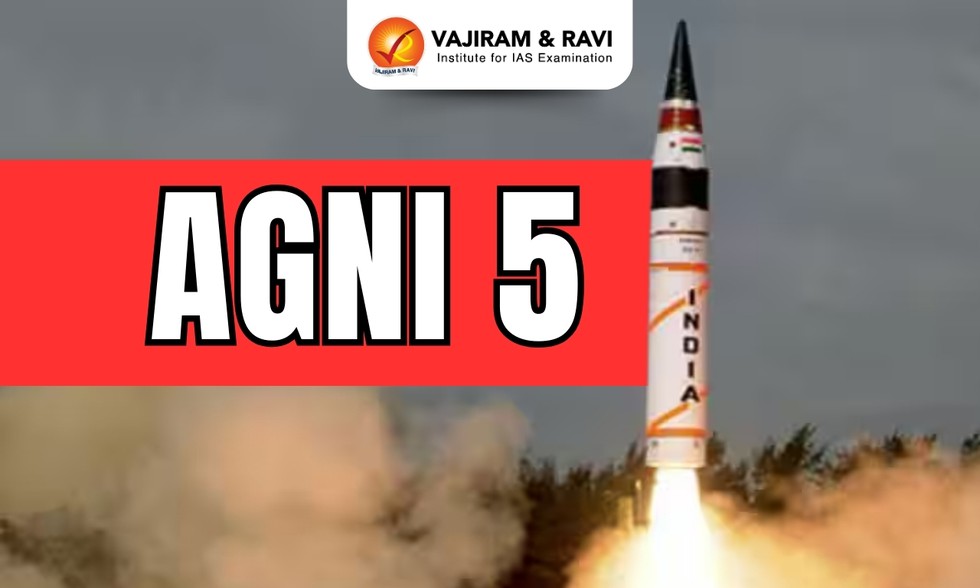About Agni-5 Missile:
- It is a nuclear-capable land-based Intercontinental Ballistic Missile (ICBM) with Multiple Independently Targetable Reentry Vehicle (MIRV) capability.
- It is developed by the Defence Research and Development Organisation (DRDO).
- Features of Agni-5 Missile
- Range: It is one of India’s most advanced long-range missiles, capable of striking targets well beyond 5,000 kilometers
- It is designed with modern navigation, guidance, warhead, and engine technologies and strengthens India’s strategic deterrence capability.
- Warhead Capacity: It is capable of carrying and firing up to three nuclear warheads simultaneously.
What is a Ballistic Missile?
- It is a rocket-propelled, self-guided strategic-weapons system that follows a ballistic trajectory to deliver a payload from its launch site to a predetermined target.
- They are powered initially by a rocket or series of rockets in stages, but then follow an unpowered trajectory that arches upwards before descending to reach its intended target.
- They can carry conventional high explosives as well as chemical, biological, or nuclear munitions.
- They can be launched from aircraft, ships, and submarines, in addition to land-based silos and mobile platforms.
- There are four general classifications of ballistic missiles based on their range, or the maximum distance the missile can travel:
- Short-range: less than 1,000 kilometers (approximately 620 miles), also known as “tactical” ballistic missiles.
- Medium-range: between 1,000 and 3,000 kilometers (approximately 620-1,860 miles), also known as “theater” ballistic missiles.
- Intermediate-range: between 3,000 and 5,500 kilometers (approximately 1,860-3,410 miles)
- Long-range: more than 5,500 kilometers (approximately 3,410 miles), also known as intercontinental or strategic ballistic missiles.
